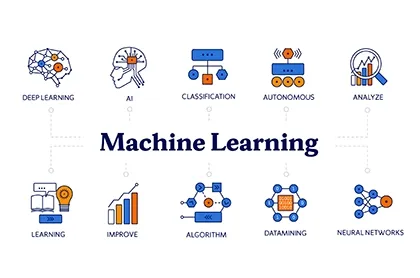If you're surrounded by data and wondering if you need business intelligence, this article can help. Many businesses struggle with inadequate tools because they're unsure how BI adds value.
We'll explore how BI can help your business and when it's time to implement a suitable BI solution.
First, let's define business intelligence. You'll find many definitions of what BI truly is, but there's no mystery. BI simply describes the transformation of your raw (unstructured) data into something meaningful. This happens using BI software.
It's probably more helpful to explain the benefits of BI. Most organizations realize they sit on a "gold mine" of data – including customer transactions, online behavior, financials, and HR data.
There's virtually unlimited information that can be used to give leaders a better picture of what's happening in the business. You can also leverage information to help make more realistic and better business decisions.
Imagine having a crystal ball that helps predict sales and financial performance, provides insights into your entire industry, and shows you how your competitors are doing.
Well, BI isn't exactly a crystal ball, but you can use BI tools to predict future events – aligning predictions with real-world occurrences to support your strategic business plan.
BI Surveys Show Key Results from Using a BI Solution:
- Increased Competitive Advantage
- Reduced Costs
- Increased Profitability
- Higher Employee and Customer Satisfaction
The great news is that BI is no longer the exclusive domain of deep-pocketed organizations. Major advances in BI technologies, flexible deployment, and licensing options now make these tools accessible to all types of organizations.
Let's discuss five signs that indicate your business needs a BI solution. You know your business needs some BI "magic" when...
1. You Have Lots of Data, But No Real Information
Sound familiar? Data collection is relatively easy – every keystroke leaves a digital footprint adding to your data mountain. But it's useless if you can't extract value. The key lies in the difference between data and information.
The words data and information are often used interchangeably, but in the context of business analytics, they differ. Information is data transformed into a meaningful and useful context, ready to inform its audience.
If you lack information, you may struggle to glean actionable insights from your data accumulation and analysis. That's where the "intelligence" of a BI tool comes in.
BI's power lies in its ability to enhance your ability to identify trends and issues, uncover fresh awareness, and fine-tune operations to meet business objectives. Data is the door, but BI is the key to unlocking the value of that information.
2. IT Stands Between You and Your BI Reports
If your IT department controls all company data, getting reports can become a chore. Creating reports without BI software, especially complex reports or dashboards, requires someone with technical skills, forcing non-technical users to rely on IT.
Constantly asking your IT department to modify and edit reports can lead to delays. This is a clear sign that it's time to empower those who truly benefit from data analysis to achieve business goals – your business users.
Any integrated BI tool with a clean and intuitive user interface will allow business users to build their own reports and have the flexibility to add or modify any BI dashboard.
3. You Still Rely on Spreadsheets, But Your Data Is Too Big
One major hurdle companies face is hitting the Excel scalability wall. Excel often serves as the lifeblood of a company's reporting needs. But things get complicated when reports contain more data than Excel was designed to handle.
In a growing business, it doesn't take long for data to outgrow Excel's capacity, even if you regularly clean and manage your datasets. When that happens, you're left with clunky spreadsheets that don't allow for simultaneous data sharing and updating.
Getting an accurate and unified view of the bigger picture using a BI tool that easily blends data from multiple sources creates cohesive analysis at speed for any data volume.
Basic tasks like creating organizational charts, distributing and collecting information from various managers, consolidating multiple spreadsheets, and fixing broken macros and formulas suddenly become a breeze.
4. You Dread Joining Data from Different Sources
In today's business environment, big data refers to the combined amount of data from several different sources that are brought together into a common location.
If you're still running reports in disparate systems, trying to make sense of all the relationships between datasets, you're working too hard – and probably gaining only a fraction of the insights possible with a BI tool removing data silos.
Once you start using a BI tool to successfully work with multiple data sources, you'll also realize how easy it is to add other data sources to the mix, and there's no end to the combinations.
5. A Pie Chart Is Supposed to Show KPIs
Businesses are quickly learning the difference between reports and KPIs. While reports serve as a starting point for crucial analysis, KPIs empower you to display the key metrics driving your business decisions.
If your data can't tell you where your business is performing well or poorly, or doesn't provide clear and actionable data, then you need BI. If you want the real benefits of business analytics, your little pie chart is going to need some help.
Summary
Every modern, data-driven organization needs some type of BI tool to help move from intuitive business execution to intelligent business execution. If you see any of the weaknesses above, it's time to explore how BI can help transform your data into information. When deciding to invest in a BI tool, ensure your organization has a BI strategy in place, conducts a thorough proof-of-concept, and selects a tool that meets your organization's current and future needs.





